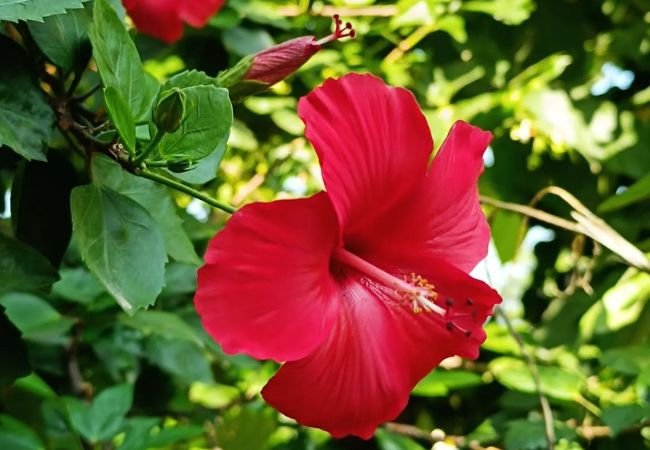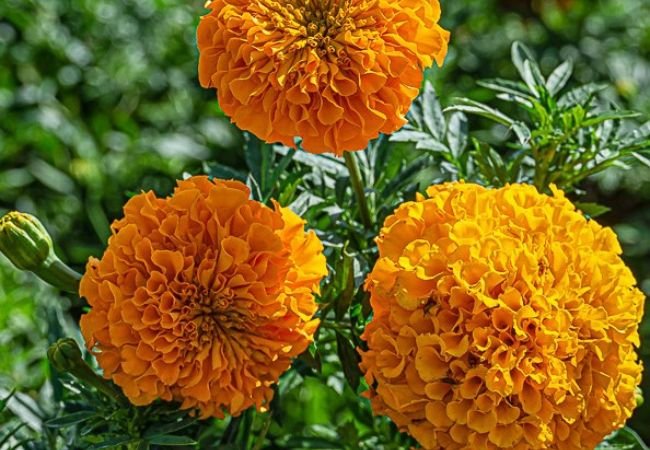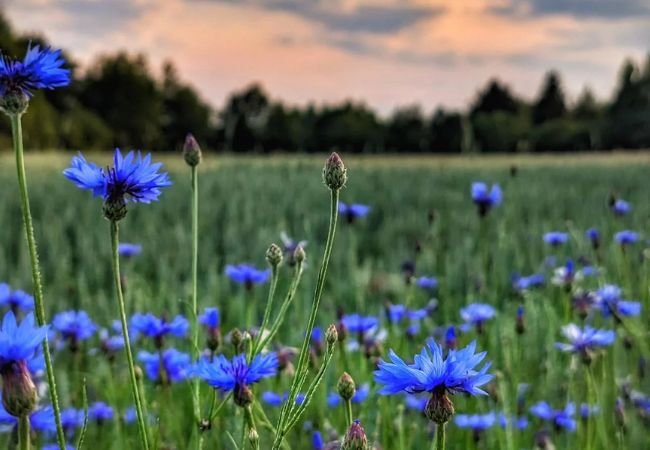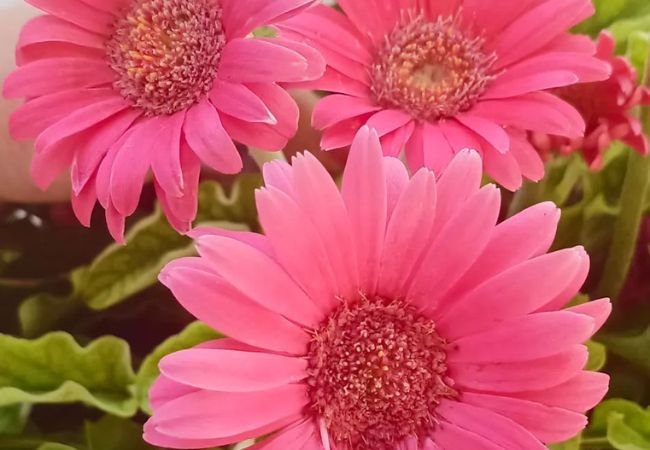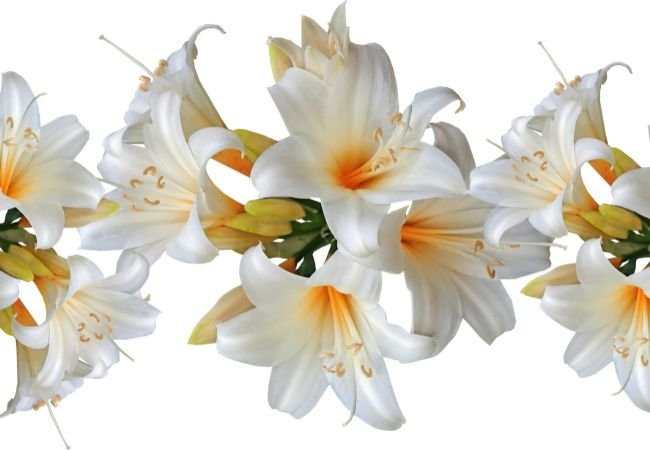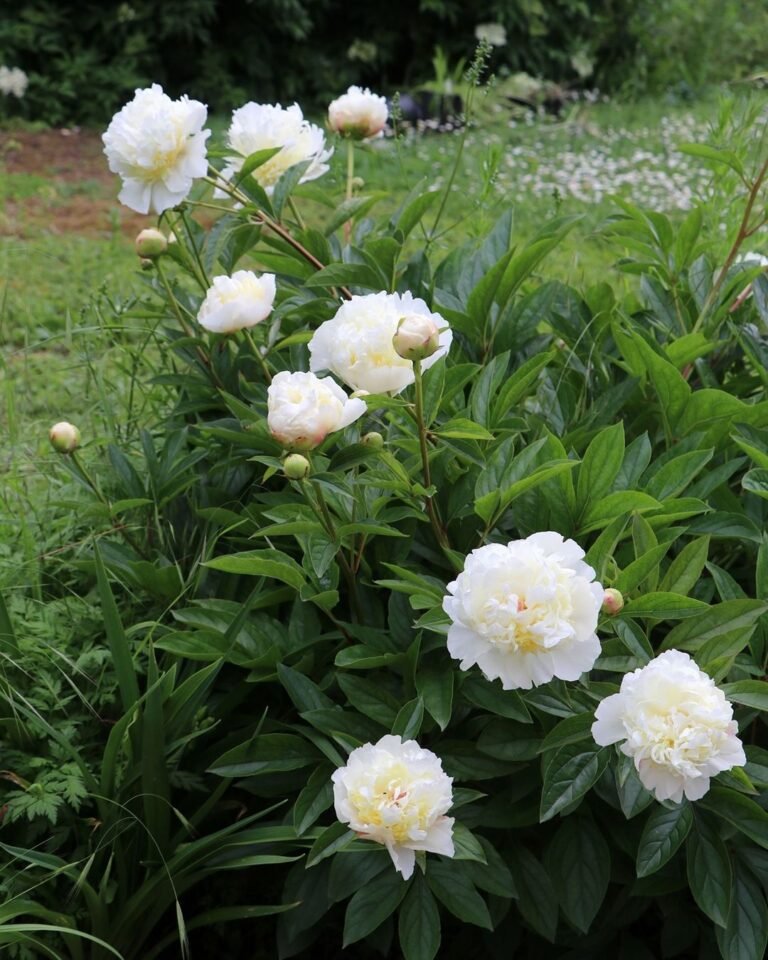Variegated Shell Ginger: Your Guide to a Lush Garden
Get the ultimate guide to growing Variegated Shell Ginger. Discover planting tips, care instructions and how to maximize its lush foliage.
Are you looking to add a touch of tropical elegance to your garden? Look no further than the Variegated Shell Ginger. This stunning plant, with its bold, striped leaves and occasional fragrant flowers, can transform any space into a lush, exotic paradise. In this comprehensive guide, we’ll explore everything you need to know about growing and caring for Variegated Shell Ginger, from planting to maintenance and beyond. Get ready to create a vibrant, eye-catching garden that will be the envy of your neighborhood!
Here’s a chart with information about the Variegated Shell Ginger (Alpinia zerumbet ‘Variegata’):
| Category | Information |
|---|---|
| Botanical Name | Alpinia zerumbet ‘Variegata’ |
| Common Name | Variegated Shell Ginger |
| Plant Type | Herbaceous perennial |
| Hardiness Zone | USDA Zones 8-11 |
| Sun Exposure | Partial shade to full shade |
| Soil Type | Moist, well-draining |
| Watering | Moderate |
| Growth Habit | Upright, clumping |
| Height/Spread | 6-8 feet tall, 3-5 feet wide |
| Special Features | Variegated foliage with green and creamy yellow stripes, pinkish-white fragrant flowers, tropical appearance, used in tropical gardens or as a container plant |
What is Variegated Shell Ginger?
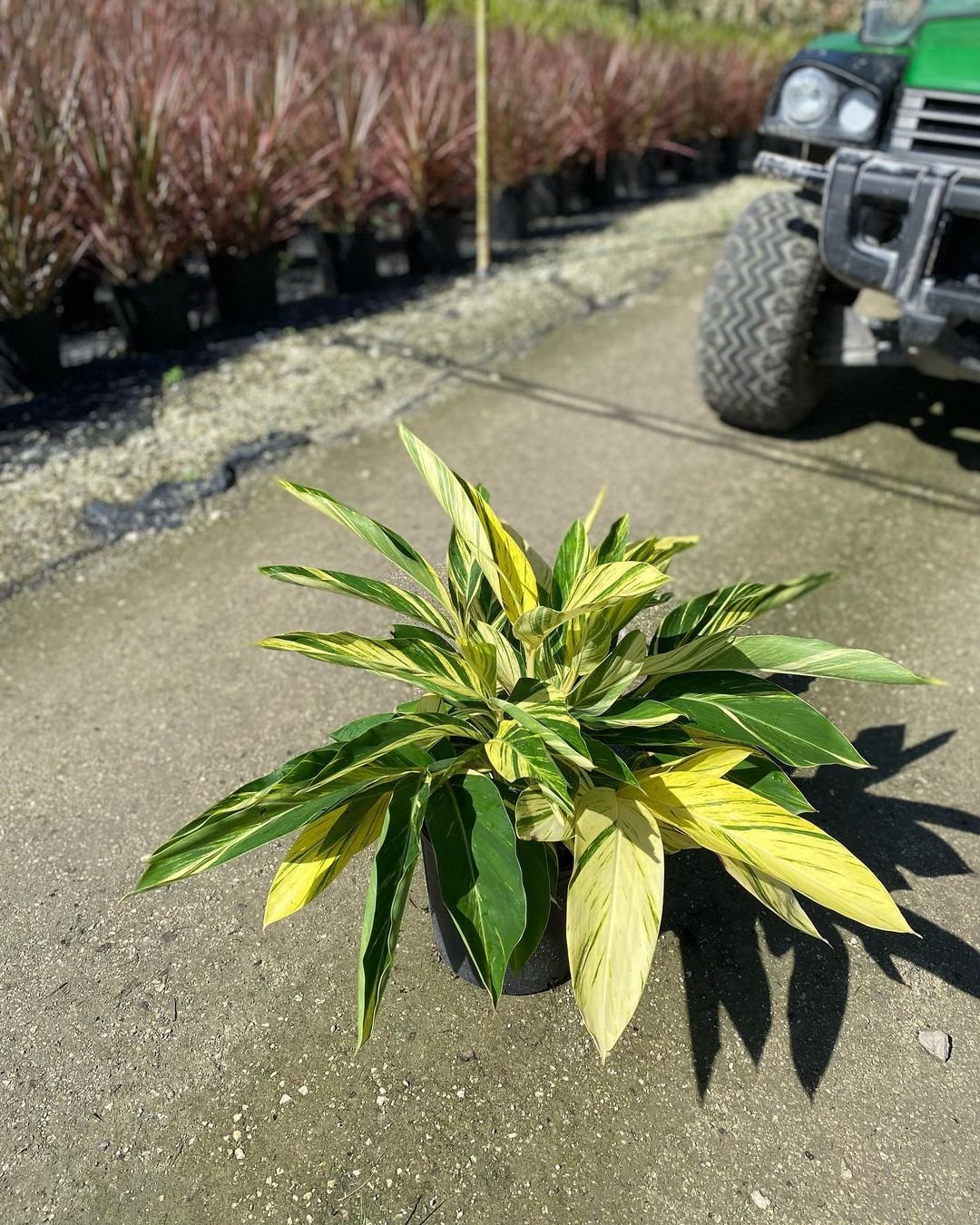
Before we dive into care tips, let’s get acquainted with this beautiful plant. Variegated Shell Ginger (Alpinia zerumbet ‘Variegata’) is a tropical perennial that belongs to the ginger family. It’s prized for its large, paddle-shaped leaves that feature striking green and yellow stripes, creating a bold and dramatic effect in the garden.
This plant gets its name from the shell-like appearance of its flowers, which, when they appear, are pendulous clusters of white blooms with red centers. However, it’s primarily grown for its stunning foliage rather than its flowers.
Key Features of Variegated Shell Ginger:
- Height: Can grow up to 8-10 feet tall in ideal conditions
- Spread: Typically spreads 3-5 feet wide
- Foliage: Large, variegated leaves with green and yellow stripes
- Flowers: Fragrant, shell-like white flowers with red centers (when blooming)
- Growth habit: Upright, clumping form
- Tropical appeal: Adds an exotic touch to gardens and landscapes
Now that we’re familiar with this eye-catching plant, let’s explore how to make it thrive in your garden.
Planting Variegated Shell Ginger
Proper planting is crucial for the long-term health and success of your Variegated Shell Ginger. Follow these steps to give your plant the best start:
- Choose the right location: Variegated Shell Ginger prefers partial shade to full shade. In warmer climates, protection from harsh afternoon sun is essential.
- Prepare the soil: This plant thrives in rich, well-draining soil. Aim for a slightly acidic to neutral pH (6.0-7.0). If needed, amend your soil with organic matter to improve drainage and fertility.
- Dig the hole: Make it twice as wide as the root ball and just as deep. This encourages roots to spread outward.
- Plant at the right depth: The top of the root ball should be level with the soil surface.
- Backfill and water: Gently fill in around the roots with soil, tamping down to remove air pockets. Water thoroughly after planting.
- Mulch: Apply a 2-3 inch layer of organic mulch around the base, keeping it away from the stems to prevent rot.
Caring for Your Variegated Shell Ginger
Once your Variegated Shell Ginger is in the ground, it’s time to nurture it to its full potential. Here are essential care tips to ensure your plant thrives:
Watering
Variegated Shell Ginger prefers consistently moist soil but doesn’t tolerate waterlogged conditions. Follow these watering guidelines:
- Water deeply and regularly during the growing season, especially in hot weather.
- Aim to keep the soil evenly moist but not soggy.
- Use a soaker hose or drip irrigation for efficient watering.
- Reduce watering in winter when growth slows.
Fertilizing
Regular fertilization helps maintain the vibrant variegation and promotes healthy growth:
- Apply a balanced, slow-release fertilizer in early spring as new growth emerges.
- Use a fertilizer with an NPK ratio of 10-10-10 or similar.
- Feed monthly during the growing season with a water-soluble fertilizer diluted to half strength.
Pruning
Pruning helps maintain the plant’s shape and removes any damaged or unsightly leaves:
- Remove any dead, damaged or yellowing leaves as they appear.
- Cut back older canes to the ground in early spring to encourage new growth.
- Trim back the plant if it becomes too tall or wide for its space.
Pest and Disease Management
Variegated Shell Ginger is generally resistant to pests and diseases, but it’s always good to be vigilant:
- Watch for common pests like spider mites or mealybugs.
- If pests appear, treat with insecticidal soap or neem oil.
- Prevent fungal diseases by ensuring good air circulation and avoiding overhead watering.
Landscaping with Variegated Shell Ginger
Now that you know how to care for your Variegated Shell Ginger, let’s explore some creative ways to incorporate it into your landscape:
- Tropical borders: Create a lush, tropical border with Variegated Shell Ginger as a backdrop.
- Container plantings: Grow in large containers for patios, decks, or poolside areas.
- Shade gardens: Use as a striking focal point in shaded areas of the garden.
- Privacy screens: Plant in rows to create a beautiful, natural privacy screen.
- Accent plant: Use as a bold accent plant to add texture and color to garden beds.
- Indoor plants: In cooler climates, grow as a striking indoor plant in bright, indirect light.
- Water gardens: Plant near water features to enhance the tropical feel.
Companion Plants for Variegated Shell Ginger
To create a harmonious and visually appealing landscape, consider pairing your Variegated Shell Ginger with these complementary plants:
- Caladiums (Caladium spp.): These colorful foliage plants complement the variegated leaves of Shell Ginger.
- Ferns (various species): Ferns add a delicate texture that contrasts nicely with the bold leaves of Shell Ginger.
- Hostas (Hosta spp.): These shade-loving perennials pair well with Variegated Shell Ginger in cooler climates.
- Coleus (Plectranthus scutellarioides): The diverse colors of Coleus can echo or contrast with the variegation of Shell Ginger.
- Bird’s Nest Fern (Asplenium nidus): This tropical fern complements the exotic look of Variegated Shell Ginger.
Seasonal Interest of Variegated Shell Ginger
One of the many charms of Variegated Shell Ginger is its year-round appeal, especially in warmer climates. Here’s what you can expect throughout the year:
- Spring: New growth emerges, with fresh, brightly variegated leaves.
- Summer: The plant reaches its full, lush growth, providing a tropical backdrop to the garden.
- Fall: In warm climates, the plant continues to thrive. In cooler areas, prepare to bring it indoors.
- Winter: In frost-free areas, the plant remains evergreen. In colder regions, it can be grown as a striking indoor plant.
Propagating Variegated Shell Ginger
If you’ve fallen in love with your Variegated Shell Ginger and want more, good news – it’s relatively easy to propagate! Here’s how:
Division
In spring, dig up the entire clump.
Gently separate the rhizomes, ensuring each division has several healthy shoots.
Replant the divisions immediately and water well.
Rhizome Cuttings
Cut a 4-6 inch section of rhizome with at least one growth bud.
Plant the rhizome horizontally, just below the soil surface.
Keep the soil moist until new growth appears.
Variegated Shell Ginger in Different Climates
While Variegated Shell Ginger is a tropical plant, it can be grown in various climates with the right care:
- Tropical and subtropical climates (USDA zones 8-11): Ideal conditions for year-round outdoor growth.
- Temperate climates (USDA zones 7 and below): Grow as a container plant and bring indoors during cold weather.
- Indoor growing: Can be grown as a houseplant in any climate, provided it receives bright, indirect light.
Troubleshooting Common Issues
Even with the best care, you might encounter some challenges with your Variegated Shell Ginger. Here are some common issues and how to address them:
- Browning leaf tips: Often caused by low humidity or inconsistent watering. Increase humidity and maintain even soil moisture.
- Loss of variegation: Usually due to insufficient light. Move the plant to a brighter location, but avoid direct sunlight.
- Yellowing leaves: Can indicate overwatering or poor drainage. Ensure the soil drains well and allow it to dry slightly between waterings.
- Lack of growth: In colder climates, this may be due to insufficient light or temperature. Consider supplemental lighting or moving to a warmer location.
Environmental Benefits of Variegated Shell Ginger
Beyond its ornamental value, Variegated Shell Ginger offers several environmental benefits:
- Air purification: Like many tropical plants, it can help improve indoor air quality.
- Humidity regulation: In indoor settings, it can help increase humidity levels.
- Wildlife habitat: In outdoor settings, it can provide shelter for small wildlife.
- Erosion control: Its extensive root system can help prevent soil erosion in garden settings.
Variegated Shell Ginger in Traditional Uses
While primarily grown as an ornamental plant, Shell Ginger has traditional uses in its native regions:
- The leaves are sometimes used to wrap food for cooking.
- In some cultures, the plant is used in traditional medicine.
- The aromatic leaves can be used to make a soothing tea.
Variegated Shell Ginger is a versatile, eye-catching plant that can add a touch of tropical elegance to any garden or indoor space. With its striking variegated foliage, low maintenance requirements and adaptability to various growing conditions, it’s an excellent choice for gardeners looking to create a lush, exotic atmosphere.
By following these planting tips, care instructions and creative landscaping ideas, you’ll be well on your way to creating a thriving, beautiful garden that showcases the stunning beauty of Variegated Shell Ginger. Whether you’re growing it outdoors in a tropical paradise or as a striking indoor specimen in cooler climates, this plant is sure to become a cherished addition to your green space.
Remember, the key to success with Variegated Shell Ginger lies in providing the right growing conditions, consistent care, and a little bit of creativity in your landscape design. So go ahead, give this tropical beauty a try and watch as it transforms your space into a lush, vibrant oasis that you’ll enjoy year after year!

